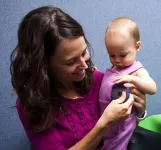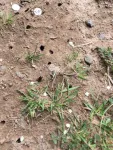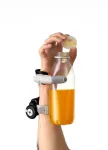(Press-News.org) Most native species avoid more urbanized areas of Los Angeles, but slugs and snails may actually prefer these environments, according to a study publishing May 29 in the open-access journal PLOS ONE by Joseph Curti from the University of California, Los Angeles, and colleagues.
Urban areas continue to grow around the world, putting pressure on native species that find it difficult to tolerate the habitat changes and pollution it brings. To conserve and even increase biodiversity in cities, scientists and city planners need large-scale data on the ecological communities present, but this is time consuming and difficult to collect. Researchers used data from iNaturalist, a large database of species observations contributed by scientists and community scientists, to investigate the tolerance of animal species to urban environments. They calculated an urban tolerance score for 512 terrestrial animal species native to southern California. Species were divided into taxonomic groupings including mammals, reptiles and amphibians, birds, butterflies and moths, spiders, bees and wasps, and slugs and snails, among others. Next, they assessed the occurrence of urban-tolerant and intolerant species across a grid of squares covering Los Angeles. They combined this with data on the level of urbanization in different grid cells across the city, such as light and noise pollution.
On average, native species preferred less urbanized locations. Snails and slugs were the exception — the five mollusk species included in the study were more common in more urbanized areas. Butterflies and moths, on the other hand, were the least urban-tolerant group. Mammals and reptiles and amphibians were also relatively intolerant of urban environments, while lady beetles, spiders and birds had less strong preferences – though still preferred less urbanized areas overall.
The analysis could help city planners to increase urban biodiversity. For example, butterfly observations could be used to identify target locations for conservation initiatives to support endangered species like the Palos Verdes blue butterfly. The study also provides baseline data to assess the success of local biodiversity initiatives. Although crowd-sourced data has limitations, for example because not all species are easy for members of the public to detect, the authors note that it can also provide a rich database to help manage and promote biodiversity in cities.
The authors add: “In collaboration with the City of Los Angeles, we sought to understand how native species were distributed across the city and to describe their association with urban intensity. We found that native species in Los Angeles were on average negatively associated with urban intensity, and that areas of the city with higher urban intensity typically contained more urban tolerant native species. The methodology developed for this research project is intended to be reevaluated in order to track efforts to increase urban native species within the City of Los Angeles.”
#####
In your coverage please use this URL to provide access to the freely available article in PLOS ONE: https://journals.plos.org/plosone/article?id=10.1371/journal.pone.0295476
Citation: Curti JN, Barton M, Flores RG, Lechner M, Lipman A, Montgomery GA, et al. (2024) Using unstructured crowd-sourced data to evaluate urban tolerance of terrestrial native animal species within a California Mega-City. PLoS ONE 19(5): e0295476. https://doi.org/10.1371/journal.pone.0295476
Author Countries: USA
Funding: The author(s) received no specific funding for this work.
END
Slugs and snails love the city, unlike other animals
Analysis of crowd-sourced data reveals species’ tolerance of urban habitats in Los Angeles
2024-05-29
ELSE PRESS RELEASES FROM THIS DATE:
Ideas that cross international borders may have powerful impact on elections
2024-05-29
New simulations provide mathematical support for the theory that the spread of political ideas across international borders may have a big impact on election outcomes, and that small actions boosting a minority idea can gradually lead to global-scale political change. Jose Segovia-Martin and Óscar Rivero present these findings in the open-access journal PLOS ONE on May 29.
People in many regions around the world are increasingly exposed to international information—such as news and opinions shared via social media—allowing for the possibility of ...
YouTube’s comments section: Political echo chamber or constructive cross-partisan forum?
2024-05-29
The YouTube comments sections of politically neutral news outlets might be more conducive to cooperative, cross-partisan conversation than their liberal and conservative counterparts, according to a study published May 29, 2024 in the open-access journal PLOS ONE by Seung Woo Chae and Sung Hyun Lee from Indiana University. The study, which focused on the media response to the 2019 release of the Mueller report, found that more cross-partisan discussions took place on liberal channels than conservative ones and mainstream news outlets hosted more cross-partisan ...
Babies babble squeals and growls in clustering patterns observable from birth through the first year, suggesting this active vocal exploration is important to speech development
2024-05-29
In the first large-scale observation with human coding of infant vocalizations using all-day home recordings, babies of all ages from birth up to a year old squealed and growled in significant cluster patterns, suggesting the babies may have been actively engaged in noisemaking play and sound practice, according to a study published May 29, 2024 in the open-access journal PLOS ONE by Hyunjoo Yoo from the University of Alabama, Pumpki Lei Su from the University of Texas at Dallas, and colleagues.
In their first year of life, babies spend a remarkable amount of time vocalizing—both responding with noises to parents and caregivers, as well as self-directed babbling that could ...
The sweat bee, H. rubicundus, is less sociable in Scotland than in Cornwall, but is genetically differentiated and genetically isolated too
2024-05-29
The sweat bee, H. rubicundus, is less sociable in Scotland than in Cornwall, but is genetically differentiated and genetically isolated too
###
Article URL: https://journals.plos.org/plosone/article?id=10.1371/journal.pone.0302688
Article Title: Genetic differentiation at extreme latitudes in the socially plastic sweat bee Halictus rubicundus
Author Countries: Netherlands, UK
Funding: This work is part of a project that received funding from the European Research Council (ERC) under the European Horizon's 202 research and innovation programme (grantagreement no. 695744). RAB was funded by a Wageningen Graduate School Postdoctoral Talent fellowship and a BBSRC discovery ...
Smartphone use may help adolescents feel better - at least in the moment, finds real-time survey of US teens
2024-05-29
Smartphone use may help adolescents feel better - at least in the moment, finds real-time survey of US teens
###
Article URL: https://journals.plos.org/plosone/article?id=10.1371/journal.pone.0298422
Article Title: Real-world adolescent smartphone use is associated with improvements in mood: An ecological momentary assessment study
Author Countries: USA
Funding: This study used data from a larger project that was funded by a stand-alone research agreement between Facebook's Youth Research Fund (2018-2020, Facebook, Inc.) ...
Public have no difficulty getting to grips with an extra thumb, study finds
2024-05-29
Cambridge researchers have shown that members of the public have little trouble in learning very quickly how to use a third thumb – a controllable, prosthetic extra thumb – to pick up and manipulate objects.
The team tested the robotic device on a diverse range of participants, which they say is essential for ensuring new technologies are inclusive and can work for everyone.
An emerging area of future technology is motor augmentation – using motorised wearable devices such as exoskeletons or extra robotic body parts to advance our motor ...
Breakthrough in cancer prediction with nano informatics and AI
2024-05-29
A recent study has introduced a novel method combining nano informatics and machine learning to precisely predict cancer cell behaviors, enabling the identification of cell subpopulations with distinct characteristics like drug sensitivity and metastatic potential. This research could transform cancer diagnosis and treatment, enhancing personalized medicine by facilitating rapid and accurate testing of cancer cell behaviors from patient biopsies and potentially leading to the development of new clinical tests to monitor disease progression and treatment effectiveness.
In an important advance in the fight against ...
New immunotherapy could treat cancer in the bone
2024-05-29
A new type of immunotherapy, developed by UCL researchers, has shown promising preclinical results against a bone cancer called osteosarcoma, as part of a study in mice.
Osteosarcoma is the most common bone cancer in teenagers but is still relatively rare, with around 160 new cases each year in the UK. Meanwhile, more than 150,000 people suffer from cancer that has spread to the bones.
Cancer that starts in or spreads to the bones is particularly hard to treat, meaning that it is a leading cause of cancer-related death. ...
USC researchers pioneer new brain imaging technique through clear “window” in patient’s skull
2024-05-29
In the first study of its kind, researchers from the Keck School of Medicine of USC and the California Institute of Technology (Caltech) designed and implanted a transparent window in the skull of a patient, then used functional ultrasound imaging (fUSI) to collect high-resolution brain imaging data through the window. Their preliminary findings suggest that this sensitive, non-invasive approach could open new avenues for patient monitoring and clinical research, as well as broader studies of how the brain functions.
“This is the first time anyone had applied ...
Rahimi Wins CAREER Award for Electrochemical Carbon Capture Research
2024-05-29
HOUSTON, May 29, 2024 – Mim Rahimi, an assistant professor of civil and environmental engineering at the University of Houston, has received a National Science Foundation CAREER award for his research proposal focusing on liquid-liquid interfaces for electrochemical carbon capture research.
His research proposal is “Leveraging Liquid-Liquid Interfaces for Innovative Electrochemical Carbon Capture.” It was selected for $537,719 in funding, with research running through August 2029.
“The project ...
LAST 30 PRESS RELEASES:
New modeling approach sheds light on rare gut disease
Study documents potentially hazardous flame retardants in firefighter gear
Can certain bacteria regulate aging of the immune system and its related alterations?
AI model helps diagnose often undetected heart disease from simple EKG
There are fewer online trolls than people think
Cell membrane fluctuations produce electricity
Jeonbuk National University study shows positive parenting can protect adolescents against self-harm
Surface-engineered ZnO nanocrystals to tackle perfluoroalkyl substance contamination
This new understanding of T cell receptors may improve cancer immunotherapies
A new fossil face sheds light on early migrations of ancient human ancestor
A new immunotherapy approach could work for many types of cancer
A new way to diagnose deadly lung infections and save lives
40 percent of MRI signals do not correspond to actual brain activity
How brain-inspired algorithms could drive down AI energy costs
Gum disease may be linked to plaque buildup in arteries, higher risk of major CVD events
Contrails are a major driver of aviation’s climate impact
Structure of dopamine-releasing neurons relates to the type of circuits they form for smell-processing
Reducing social isolation protects the brain in later life
Keeping the heart healthy increases longevity even after cancer
Young adults commonly mix cannabis with nicotine and tobacco
Comprehensive review illuminates tau protein's dual nature in brain health, disease, and emerging psychiatric connections
Book prepares K-12 leaders for the next public health crisis
Storms in the Southern Ocean mitigates global warming
Seals on the move: Research reveals key data for offshore development and international ecology
Sports injuries sustained during your period might be more severe
World's first successful 2 Tbit/s free-space optical communication using small optical terminals mountable on satellites and HAPS
Can intimate relationships affect your heart? New study says ‘yes’
Scalable and healable gradient textiles for multi‑scenario radiative cooling via bicomponent blow spinning
Research shows informed traders never let a good climate crisis go to waste
Intelligent XGBoost framework enhances asphalt pavement skid resistance assessment
[Press-News.org] Slugs and snails love the city, unlike other animalsAnalysis of crowd-sourced data reveals species’ tolerance of urban habitats in Los Angeles










